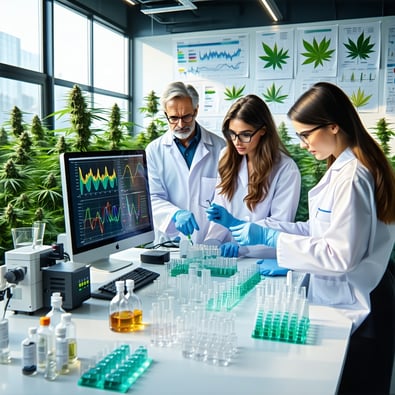The Growing Challenge of Cannabis-Impaired Driving in the U.S.
Drug-impaired driving is becoming a growing public safety concern across the United States. With more than 400 substances capable of causing impairment, understanding the risks has never been more important. Among these drugs, cannabis stands out as the most common substance detected in drivers involved in crashes.
According to the Governor’s Highway Safety Association, 56% of people injured or killed in traffic accidents tested positive for alcohol and/or drugs. Between 2019 and 2021, trauma center data showed that cannabis was present in 25% of cases—more than alcohol, stimulants, or opioids. Alarmingly, 20% of those tested had multiple drugs in their system, making detection and enforcement even more complex.
The legal and social landscape surrounding cannabis is shifting rapidly. As more states move toward legalization, public perception has become more relaxed. However, the risks of driving after consumption are still widely misunderstood. A 2023 AAA Foundation for Traffic Safety survey found that while 94% of drivers believe it’s extremely dangerous to drive over the legal alcohol limit, only 70% view driving within an hour of consuming cannabis as risky. Even more concerning, some users mistakenly believe cannabis improves focus or driving performance.
Scientific research strongly contradicts that myth. Cannabis affects brain functions crucial for safe driving—attention, decision-making, coordination, and reaction time. These impairments can significantly increase the likelihood of accidents. Yet, many states, including New York, lack a “per se” limit that clearly defines legal impairment levels for cannabis. Unlike the 0.08% blood-alcohol concentration for alcohol, there’s no federal or state standard for THC levels that automatically indicate impairment.
Currently, officers rely on behavioral indicators such as erratic driving, slurred speech, or bloodshot eyes to assess cannabis impairment. Specially trained Drug Recognition Experts (DREs) play a vital role in identifying drivers under the influence. However, without clear thresholds, enforcement remains challenging.
To address this, states could consider introducing per-se limits alongside roadside saliva testing for THC detection. These measures would create consistency, make enforcement more efficient, and give cannabis consumers clearer guidance on safe driving practices.
Even though recreational cannabis is legal for adults in New York, driving while impaired remains illegal and dangerous. Studies indicate that increased legalization has correlated with higher crash rates and fatalities, suggesting that cannabis-related impairment is a growing epidemic that needs urgent attention.
Public education, stronger enforcement, and clear legal standards are crucial to reducing cannabis-impaired driving and protecting everyone on the road.





